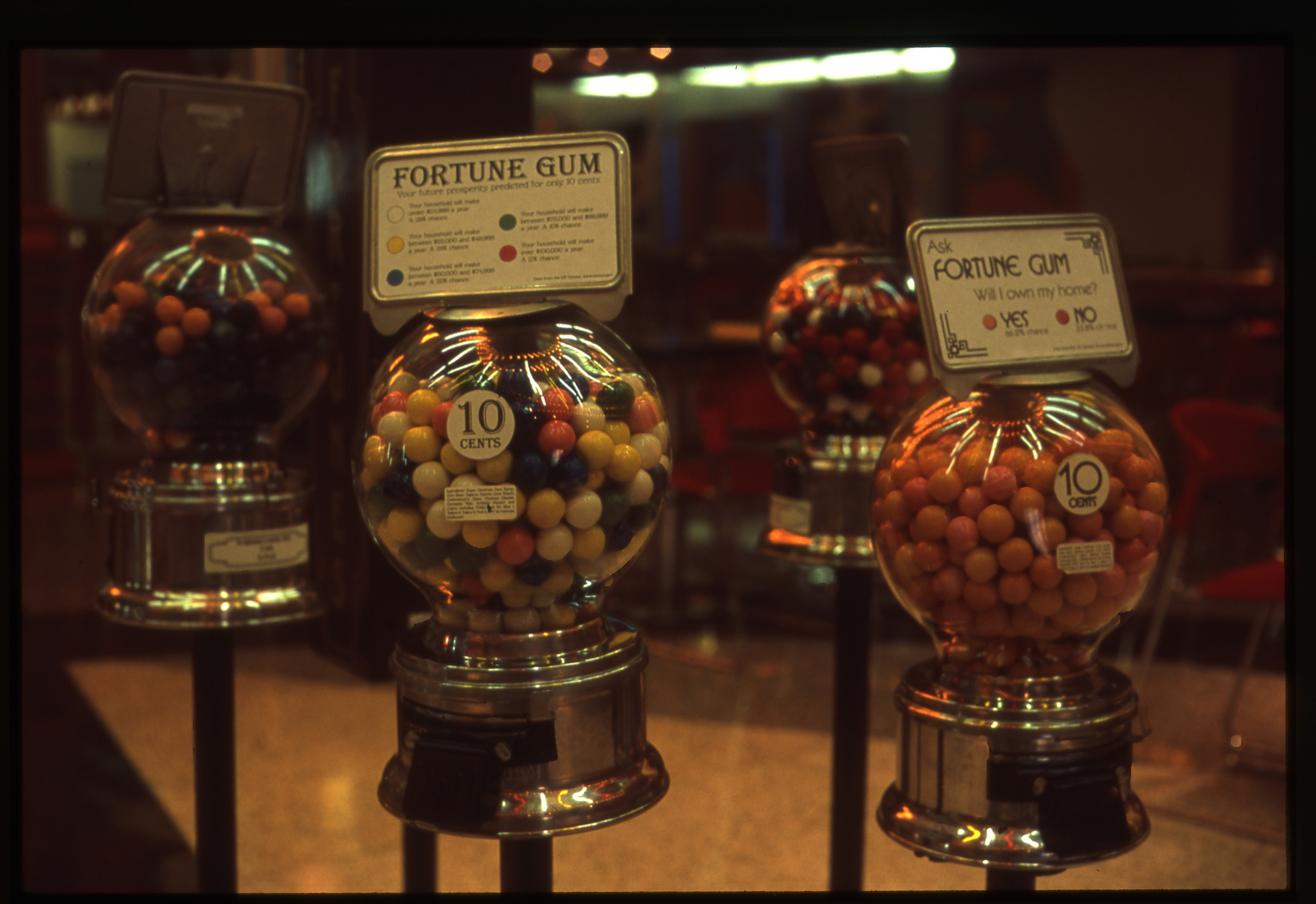A public artwork to be placed in grocery stores, retail stores or wherever coin operated machines are found. Gum is dispensed in the probability of: falling into a given income bracket, achieving a certain level of education, owning your home, or having a certain category of employment. Data is pulled from the US Census (2000) and the Bureau of Labor Statistics.
“Reflecting the aesthetics of their garish surroundings the machines both blend and comment on the side show qualities of American life and the American Dream. The playful midway atmosphere of the setting is an appropriate backdrop underscoring the very serious nature of the information that is being dispensed. It takes one glance at the colored gumballs to assess one’s chance of economic success and realize the irony behind the bright lights of the fairground.”
– Gulgun Kayim from the 2005 Visible Fringe brochure
It seems, in the US at least, that poor people know they are poor, but rich people don’t know that they are rich, though the Occupy Wall Street movement and groups like The Other 98% have brought the distribution of wealth and income back into mainstream conversation since I first created this work in 2003.
The income machine came first and was inspired from a story from my mom. She works as a seamstress, and a client was expressing how concerned she was for the welfare of her daughter because she was marrying a man who “only made $100,000 a year.” How could two people possibly expect to live on that? Of course over 80% of households in the US live on far less, including my mother, but this woman’s worldview was so insular that she really could not imagine life could be any other way.
This insularity isn’t confined to any one group. I’ve been in the room when liberal friends have bemoaned the low percentage of college graduates in the US, equating education with the (developed) intelligence to choose liberal politics. As someone from a largely working class background with many friends who did not have the opportunity to attend college, I’m a bit appalled at the line of thought.
For me, the purpose of these machines is to reveal privilege –not with the aim of inducing guilt, but rather in order to remind ourselves of the world beyond our social circle, whether that is the world of doctors and lawyers of my mom’s client or the world of advanced degree holders of my new friends. The machines work as data visualization – one can quickly see that the odds of owning a home are pretty good and that your chances of making less than $25,000 per year are much better than your chances of making $100,000 – but more importantly, they play with the American love of gambling, and the ingrained sense that our destiny is built from a combination of luck and playing your cards right. The lawyer who responds to her green gumball signifying a high school diploma by saying “well, I already have a doctorate” betrays just as much anxiety about this myth as the teenager warning her friend that he shouldn’t want a pink gumball because that means he’ll “never own a house.”
This is a work I am fairly happy with. It can appear a bit didactic, but the interaction really creates another feeling – something I’ve had the opportunity to see when refilling the machines in stores and malls. There is a sense of investment on the part of the audience that I did not completely anticipate. I also like that it is a flexible work that translates to multiple locations, speaking to a broad audience. Sometimes I would like to get back to the sort of immediacy and simplicity of this project.
